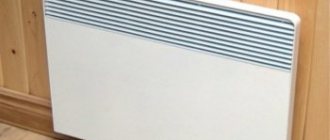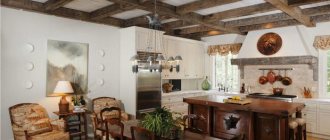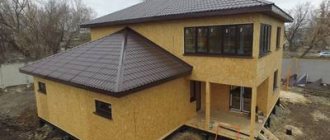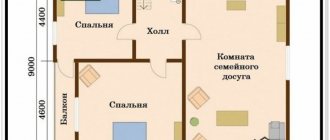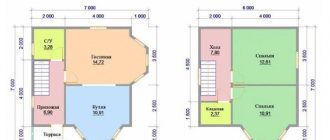When considering options for electric heating of a house, apartment or cottage, you have probably come across such a variety of household appliances as quartz heaters and tried to find reviews from real users about them. The picture that emerges is as follows: people write on forums about their personal experience in using these electric heaters, but negative and positive responses are divided approximately 50/50. Taking into account the interest of homeowners, fueled by advertising campaigns of manufacturers, we propose to find out the real pros and cons of such heaters.
Types of quartz heaters
At the moment, users can buy 2 types of quartz heating devices in stores or from manufacturers:
- monolithic in the form of flat panels up to 25 mm thick with a textured pattern;
- infrared, equipped with a heating element in a glass tube.
First of all, let’s look at the question of how the heater got its beautiful name “quartz”. The answer is simple: in the manufacture of both types of heaters, ordinary quartz sand is used. In an infrared device, a glass tube is made from it, where an electric heater is placed. In monolithic panels, sand is part of the solution from which they are cast.
Window glass is also made from quartz sand
For reference. The basis for making any glass is natural silicon, also known as sand. You can call the windows in your apartment quartz and you will be right, because the translucent part is also made of sand.
In addition to the name, both types of heating devices have other common features:
- They use nichrome wire (an alloy of nickel and chromium) as a heating element.
- The devices can be used both wall-mounted and floor-mounted on a stand.
- To limit the temperature in the room, the products are equipped with thermostats.
Monolithic painted heater
Operating principle of monolithic heaters
The heating element here is a nichrome filament with increased resistance, enclosed in a non-flammable insulating sheath. It is embedded inside a slab made from a solution of sand and white kaolin clay. The mixture, placed in a special form, undergoes pressing and heat treatment (sintering), resulting in a solid ceramic plate - a quartz heater with a textured pattern on the front side.
For reference. Manufacturers add various fillers to the solution at their discretion, for example, dolomite or marble chips. The surface of the panel is painted in the desired color or remains in the basic version - white.
A close-up of the textured pattern on the front side of the stove. The
perimeter of the stove is trimmed with a metal frame with rounded corners, where the shutdown key and connecting cable with plug are attached. The room thermostat is supplied separately from the stove (and is paid for as an option). The main technical characteristics of ceramic quartz heaters from different manufacturers are practically the same and look like this:
- power consumption – from 400 to 500 W;
- Efficiency – 99% (almost all consumed electricity is converted into heat);
- weight – from 10 to 15 kg;
- maximum surface temperature – up to 98 °C;
- overall dimensions (length / height / depth) – 60 / 35 / 2.5 cm;
- heating speed – 20 minutes (from +10 to +95 °C);
- cooling rate – 1 °C every 2 minutes.
The heating device is installed in two positions - wall-mounted and floor-mounted on a stand
Note. In advertising, manufacturers unanimously indicate daily electricity consumption in the amount of 2.5-3.6 kW. But in real life this figure does not correspond to reality; the real energy consumption is higher.
The operating principle of a monolithic quartz heater is simple: a nichrome filament heats the entire panel to the maximum temperature, causing heat to spread throughout the room in two ways - convection (heating the air) and using infrared radiation (heating all surfaces in front of the front panel of the device).
Monolithic electrical panels are evolving, and the quality of products is gradually improving. A striking example is the new Belarusian quartz-olivine heater, which has an attractive design. The natural mineral olivine is used for production. At the international exhibition BUDEXPO - 2022, a heating device from this manufacturer received the diploma “Best Innovative Product of 2018”.
The Tepleya household electric heater looks much better than products from other brands
If a thermostat is connected to the device, then when the set air temperature in the room is reached, it will turn off the heating. The stove will go into cooling mode, during which intense heat transfer continues. When the temperature drops to the lower limit, the thermostat will turn the device back on for heating.
Simple brackets for wall mounting are included with the device, but the thermostat will have to be purchased separately
In essence, a monolithic slab of quartz sand with clay is a convective-infrared heater that operates with an efficiency of 99% (like any other electric heater) and requires external control from a thermostat.
A detailed overview of heaters made in the form of plates is shown in the video:
Operating principle of an infrared heater
These household appliances have long been familiar to us by the name of the Swedish brand UFO, which has become a household name. The structure of the device is as follows: one or more glass tubes are installed horizontally (or vertically) in an oblong metal body, and nichrome heating filaments pass through them.
The semicircular surface at the back of the tubes is made of a mirror to reflect all the heat in one direction. Similar quartz heaters for home are equipped with built-in thermostats and operate according to the following algorithm:
- After turning on the device, the nichrome filament heats up and releases heat in the form of infrared radiation moving in one direction.
- First of all, surfaces and objects located in the area of action of the quartz heater are heated. The air receives heat from these surfaces, causing its temperature to gradually increase.
- When the temperature in the room reaches a user-set threshold, the built-in thermostat turns off the heating element.
- When the air in the room begins to cool, the thermostat starts the heating process again.
The appearance of infrared heaters has long been familiar to users
For reference. Tubular heaters of the UFO type have nothing in common with quartz bactericidal lamps used in medicine, and therefore do not bring any benefit to human health, as well as harm. When quartzed, hospital lamps create a powerful stream of ultraviolet radiation that destroys any microorganisms.
The heating coil of the device, which emits infrared radiation, is placed inside a glass tube for safety reasons and to increase service life. In open air, a hot filament will burn out much faster than inside a flask with an inert gas.
This is what an IR heater element looks like
So, a tubular quartz heater is a representative of infrared heating devices, not designed for convective heating of the air in the room. It is quite difficult to imagine the general technical characteristics of such devices, since they are produced in too wide an assortment.
Types of IR devices
The heating element in quartz infrared heaters is a nichrome, tungsten or carbon spiral. In open devices, it is wound around a ceramic base, behind which a reflector is placed.
Units of this type intensively burn oxygen and have a high level of fire hazard. It is strictly not recommended to use them.
In closed-type modules, the working element is the same spiral, only enclosed in a sealed tube made of durable quartz glass. The air from there is completely pumped out and oxygen combustion does not occur. The device demonstrates high efficiency and easily copes with heating small rooms.
If the heater is located in a place accessible to people, children or pets, the radiator must be equipped with additional protection: a transparent partition or metal mesh. This avoids accidents and protects residents from burns.
About the disadvantages and advantages
Since our task is to determine the real pros and cons of quartz heaters, we will not repeat the advertising statements of manufacturers, but will highlight the negative and positive aspects based on user responses. Let's start with monolithic batteries, whose advantages are as follows:
- affordable price of products (from 40 USD);
- the device does not create noise during operation;
- the most simple design, where the parts are embedded deep into the slab, allows you to reduce the maintenance of the product to cleaning from dust;
- the product is environmentally friendly, as it is made from natural materials;
- heaters, correctly selected in terms of power and quantity, warm up the room quite quickly thanks to two heat transfer paths - infrared radiation and convection.
Different textures and colors of the front panel of the quartz heater
Note. We deliberately do not list high efficiency among the advantages of heating plates, because it is inherent in all types of electric heaters. The fact that the heater does not burn oxygen when heating the air has long ceased to be an advantage, since similar disadvantages have been eliminated in other types of heaters.
Unfortunately, a solid list of advantages of monolithic heating devices is offset by a list of disadvantages:
- Decent weight, like a small cast iron radiator. When placing on the wall, you will need a reliable mount.
- The fragility of the slabs, often cracking and breaking into pieces even at the transportation stage. Also, cracks appear after the first switching on and warming up of the stove.
- The unattractive design and unsightly appearance immediately make it clear that this is a budget product.
- The heater cannot simply be plugged in, otherwise it will constantly and uncontrollably “plow” at full power. You need to buy a thermostat for a separate fee and connect it to an electric battery.
- Too high a surface temperature (95 °C) can cause burns, which is especially dangerous for small children. Again, you need to invest in a protective screen.
If the heater looks good from the front, the rough stand and rear panel spoil the impression
. A separate issue is the quality of manufacture of quartz heaters for a home or apartment, which is clearly visible on the back side of the stove (shown in the photo). According to reviews, users often receive products with peeling paint, cracks, or no sockets included, which does not add to its popularity. But the worst thing is when an electric heater connected to the network produces an electric shock when accidentally touched (there are also such things). This makes it dangerous for all residents and even pets.
For reference. In addition to quartz, purely ceramic heaters with a rear reflective layer, a convective screen and beautiful design have appeared on the market. But their price is 50% or more higher, and they heat no better. That is, due to the increase in price, the design problem was eliminated, but the efficiency did not increase.
Beautiful ceramic heater - picture
Infrared tubular devices also do not make noise during operation (sometimes they crackle slightly), but their design is more advanced than that of heating plates. This is expressed by the following advantages:
- instant heating of surfaces, bypassing the air;
- safety in operation;
- light weight and mobility;
- presence of a built-in thermostat;
- attractive design;
- acceptable sizes;
- wide selection of models and brands.
For reference. Due to the ability to quickly raise the temperature of surfaces, infrared quartz heaters can be installed directly on the street for the purpose of local heating of people.
The choice of infrared quartz heaters is very wide.
At a price, such household appliances will cost more than panel heaters, but they do not have to be completed. A significant drawback of an IR heater is that it warms up the room space too slowly; at first, a person is comfortable only in the range of the device.
Classification of quartz aggregates
A quartz heater is a practical modern device for arranging alternative heating, which contains elements of quartz sand. It can serve as both main and auxiliary heating equipment.
To function correctly, it is connected to the electrical network and creates comfortable heat by passing current through a high-resistance element. Demonstrates an impressive level of efficiency and does not burn oxygen.
It works on a resistive principle and is considered the safest for users, since it does not generate a magnetic field and does not heat metal accessories on the clothes of a person who comes too close to the unit.
It uses electricity wisely and makes it possible to save on utility bills without compromising your own comfort.
Manufacturers of heating equipment today offer two types of quartz units: infrared and monolithic (MKTEN). Both devices cope excellently with their tasks and have their own positive qualities.
Which heater is better - recommendations for choosing
If you find it difficult to choose between a monolithic and infrared heating device, then read our recommendations on this matter:
- When installing permanent electric heating in a private house or country house, it is better to buy stationary quartz heaters in the form of stoves. One condition: the products must be in harmony with the interior, otherwise you should think about another heating method.
- For local and temporary heating of people in any premises and outdoors, a quartz heater of the UFO type is perfect.
- The best way to use monolithic panels is in combination with other heating systems. For example, during the day the house is heated by a stove or boiler, and at night - by quartz heaters, and even at a cheap rate.
- Do not rely on infrared heating as the main method of heating a country house or country house where you visit. While the infrared devices warm up the building well, you will have time to finish your business and head back.
- Regardless of the type of quartz heater, select the right devices based on power. Don’t believe the advertising and don’t think that one 400 W stove will provide heat in a 10 m² room at a frost of -5 ° C and below. She barely has enough “strength” to slightly raise the temperature and prevent you from freezing.
Heating with several panels together with water radiators (standing behind the screens)
Advice. When selecting the power and number of quartz slab heaters for the central part of the Russian Federation, calculate that for each cubic meter of room in an insulated house you need to allocate 40 W of heat. A more accurate calculation of heating power is presented in a separate manual.
One of the main recommendations is not to believe numerous advertising statements of this kind:
- our panel heats up in 20 minutes and cools down for an hour, continuously releasing heat;
- our heater is 30-50% more economical than others;
- a 500 W device is enough to heat a room of 10-12 m² (in reality - no more than 7 m²);
- Our heater generates no more than 2.5 kW of electricity per day, and it’s hot in the apartment!
Counting example. For a room of 10 m² with a ceiling height of 2.7 m, on the coldest days you will need 10 x 2.7 x 40 = 1100 W of heat (that is, the same amount of electricity). In this situation, 2 monolithic heaters of 400 W each will work without interruption, wind up 0.8 x 24 = 19 kW per day and will not reach a comfortable temperature. But even if we take not the maximum, but the average heat consumption for the season and divide 1100 W in half, then we will have to spend 550 x 24 = 13200 W = 13.2 kW of heat per day on heating, no matter how you look at it.
It is too expensive to heat large rooms with quartz appliances, unless you arrange local heating
Saved at some point
When we bought the dacha, there was a fireplace in one of the rooms, which heated the room only while it was burning.
As soon as it went out, the room became cool. This did not suit us, we dismantled the fireplace. But somehow it is necessary to warm up. Based on impressions and recommendations, we purchased this heating device.
Nowadays, we have been using it for more than a year, thanks to this I have already managed to form my own opinion about it.
Pros:
+ He is silent. From the word absolutely. I sleep lightly, but even at night the device does not wake me up. Other heaters have this problem.
+ Quick and easy to install. With the help of my husband.
+ More modern design. It is impossible to immediately say that it is a heating device.
+ Thin, small, not heavy.
+ Good price. This point is also especially relevant.
+ Quickly heats a room of 15 m2.
Many of our friends have noted how warm it is now. Families began to gather with us more often.)
We noted only 1 minus - my husband received an electric shock. Well, how it happened - a mosquito bit me))
The instructions warn about this, so be sure to read it.
In general, probably everything. She pointed out important points - I recommend it to everyone.
Reviews from real users
Monolithic quartz heaters received the largest number of negative reviews, although there are also positive ones among them. If we discard fake responses, the average user rating is 3.5 on a five-point scale. Here are a few different examples:
Galina, Moscow.
I bought this “excellent” device for heating a small closed terrace at the dacha, the area is only 6.5 m2. At an outside temperature of +10 °C, the room took so long to warm up that I was tired of waiting; the heat was felt only 10 cm from the surface of the heater. In addition, when unpacking the product, I discovered that the paint was peeling off. Conclusion: the household appliance does not meet the declared characteristics.
Valery, Krasnodar.
We were looking for a suitable heater for the children's room, went through a lot of options and came across a quartz one. We decided to buy it, since the price is reasonable. In essence: the device heats well and holds heat for quite a long time, but at the same time it gives an electric shock and gets very hot, you can’t touch it. How to put it in the nursery? We called the company, they advised us to use a protective screen, and again costs. Considering the unpresentable appearance of the heater, the overall rating is a stretch of four.
Vera, Mezhdurechensk.
We bought a quartz heater to test for one of the rooms in a private house. It is far away, so the heat from the stove flows there poorly. Installed, connected, tested and were satisfied. Now you can sleep in this room and not freeze. Although it is unknown how the heater would cope alone, without a stove. To check, you need to cool down the house, but you don’t want that. I'm thinking of putting another one in the hallway.
Infrared devices can be used for heating outdoors
For reference. You can read more reviews and truthful assessments about quartz heaters on the pages of the well-known forum.
Often negative responses are caused by excessive trust in advertising and increased demands for a product in the budget price category. The second point is the unsuccessful selection of power based on savings, which again are promised by advertising. It is advisable to find out as much reliable information about the product as possible before purchasing. The most famous manufacturers of quartz heaters:
- TeplEco, St. Petersburg (RF);
- TeploPlit, St. Petersburg (RF);
- Texture, Nizhny Novgorod (RF);
- Teplopit (Republic of Belarus);
- Heat Center (Ukraine).
Characteristics
A quartz heater from is a device with energy-saving characteristics. The devices fall into the category of being economical in terms of cost and compact in size. Moreover, the unit can be used in a variety of areas and for different purposes, as it is universal.
As for the technical characteristics of an electric quartz heater, these include the following indicators:
- power equal to 400 watts;
- daily power consumption is only 3.5 kilowatts;
- the device weighs 12 kilograms;
- has a “hot brick” effect.
An ingenious DIY heater that will save you a ton of money!
This ingenious method allows you to heat almost any room in a short time, and without wasting electricity.
For a homemade air heater you will need:
Two clay flower pots, one long bolt, two nuts, three washers, three bricks, a couple of candles and a regular plate. You can also use an alcohol burner instead of candles.
Clay pots absorb the thermal energy from candles and convert it into heat. The temperature on their surface reaches 70–80 degrees Celsius, and inside it reaches more than 260 degrees, so be very careful!
Such a heater remains hot for several hours after “turning off”. Attention: it is strictly forbidden to place this heater next to flammable objects!
In a few hours your room will become very warm! Now you can stop wasting money on expensive heaters, and also significantly save energy!
Video
This is the first stage of coating, the second after 10 minutes of drying. In principle, you don’t have to do it, everything is decided by visual inspection using a magnifying glass. The nichrome coils should not be visible.
Almost finished heating element (just left to dry), length 15 mm, diameter 2 mm. Optimal supply voltage 12 V, power 8 W. Drying - on a hot heating battery, the next day connected to the power supply, applied voltage sufficient to heat up to 50 degrees (monitored with a multimeter in temperature measurement mode) - let it cool and warmed up to 100 degrees, then up to 150. Can be installed locally, operational tests the next day.
NOIROT SPOT E-3 PLUS
This convector comes from France. The packaging depicts a child, apparently emphasizing the safety of the device. Let's check how realistic this is.
Main characteristics
- Manufacture: France
- Warranty: Lifetime
- Price in stores: from 7,560 rub.
- Dimensions, mm: 420*440*80
- Weight: 3.6 kg
Housing and thermostat
Massive front panel made of thick metal with high-quality paint and varnish coating. The body has sufficient rigidity. One-piece bracket. This model can be mounted either on the wall or on legs, which are purchased separately.
An important disadvantage is that the case is not grounded, the wires touch the case and are in the heating zone.
This device has an electronic thermostat with switching operating modes (day, night, off) and a light indicator for turning on. It is graduated in degrees Celsius. The temperature sensor is remote and located at the bottom of the device.
heating element
Compact, monolithic aluminum heating element with a large fin surface. The electrical connection is located on one side of the heating element and is carried out via plug connections, which, however, are not insulated. The wires are in contact with the housing, which heats up during operation; some of the wires are in the area where the heated air exits.
Heating element temperature
Case temperature (front panel center)
Outlet air temperature
Middle
Edge
A few words about the guarantee
The manufacturer indicates on the box that the device has a lifetime warranty. The instructions indicate that the maximum lifespan of such a convector is 10 years. That is, there are no fundamental differences from the guarantees given by other manufacturers.
Pros:
- Country of origin (Europe);
- Thermostat (indication, degrees Celsius);
- Compact dimensions;
- Lifetime warranty;
- Informative packaging.
Minuses:
- The carrying (transport) handle pops out;
- Legs are not included, must be purchased separately;
- Conducting wires are located in the heating-cooling zone; over time, the insulation dries out and cracks;
- Conducting wires touch the housing - in the absence of a grounding loop (wire), this can lead to electric shock;
- There is no tilt sensor; if the legs are installed and the device falls, the heating element may overheat or fire.
Brief summary: A European device that has a number of significant safety flaws.
Requirements for a homemade device
Most of those who want to try their hand at making a heater themselves are unlikely to strive for too difficult a job.
And the purchase of a large number of different technical elements and components, whose cost is quite comparable to the price of the finished product, is hardly economically justified. Thus, the future device should be:
- easy to install;
- productive;
- economical in energy consumption;
- safe;
- profitable, that is, the costs of its production should be minimal;
- convenient;
- compact.
Considering existing heaters produced by industry, we can conclude that all these requirements are met by devices operating on the principle of infrared radiation. More precisely, the so-called thermal films. The material generates thermal energy that is transferred to objects, which, in turn, heat the environment. This heating method is considered the most effective, since the generated heat is not wasted. Accordingly, the efficiency of such a device is very high.
DIY gel air freshener
To make your own air freshener, you will need your favorite essential oils. If they are not available, then dried flowers that have a strong and pronounced aroma, sprigs of aromatic plants, or some spices that can be found in any kitchen will do.
Important! Any natural components on which air fresheners are made can cause an allergic reaction. Therefore, it is very important to make sure in advance that there is no intolerance to any oils, flowers or plants.
The longest-lasting home air freshener is considered to be gel. Various available items are suitable for decoration: shells, ribbons, dried flowers (for example, violet, rose, peony), citrus fruit peels, beads, stones. Also, special attention should be paid to the vase, which should be positioned and fit harmoniously into the interior.
Important! It is worth giving preference to a transparent container in order to see all the beauty of a homemade air freshener if it is decorated with various decorative elements. In addition, this will make it much easier to control the gel level.
To prepare the flavored gel, you will need the following ingredients:
- gelatin – 2 tablespoons;
- boiling water – 1 cup;
- glycerin – 1.5 tablespoons;
- a little food coloring - literally 1/3 teaspoon;
- favorite essential oil.
Using gelatin, you can make a gel-like mass, but glycerin will help prevent rapid evaporation and drying of the mixture. The color of food coloring depends on individual preference or what you have in your kitchen. It is this that will give the gel freshener the necessary color.
It will also be great if you add a cinnamon stick or one teaspoon in crushed form to the composition. It will create a special aroma that will overcome all other bad odors. If you decide to add essential oil, it will take literally 5-15 drops to achieve a moderate aroma. If you need a stronger and richer aroma, then you should add about 20-25 drops of oil.
An ingenious DIY heater that will save you a ton of money!
This ingenious method allows you to heat almost any room in a short time, and without wasting electricity.
For a homemade air heater you will need:
Two clay flower pots, one long bolt, two nuts, three washers, three bricks, a couple of candles and a regular plate. You can also use an alcohol burner instead of candles.
Clay pots absorb the thermal energy from candles and convert it into heat. The temperature on their surface reaches 70–80 degrees Celsius, and inside it reaches more than 260 degrees, so be very careful!
Such a heater remains hot for several hours after “turning off”. Attention: it is strictly forbidden to place this heater next to flammable objects!
In a few hours your room will become very warm! Now you can stop wasting money on expensive heaters, and also significantly save energy!
Putty for concrete floors under linoleum
Concrete floors are known to be durable and long lasting. However, in intensively used premises, such a coating may become cracked and crumble.
To prevent this from happening, concrete floors are often additionally coated with putty.
Such products make the upper layers of the material more durable and also increase the resistance of concrete to various types of chemicals.
Also, putties can be used, of course, to correct all kinds of floor defects. Before installing tiles or, for example, linoleum using this type of product, a basic leveling of the concrete surface is performed.
Varieties by purpose
To achieve the desired effect, of course, you need to choose the right putty for a cement floor. There are several types of such products intended for concrete. According to their purpose, putties of this type are classified into:
- basic;
- finishing;
- universal.
The first type of materials is used to create the main leveling layer on concrete floors. Finishing putties are applied over the base ones and make the surface as smooth as possible. Universal products of this type can be used to apply both of these types of layers.
Types by composition
Depending on the materials used for manufacturing, there are two main types of putties for concrete floors:
The last type of product is most often used to level the floor in extremely dry, not very frequently used rooms. In most cases, concrete surfaces are puttied using cement compounds. It is these products that give surfaces additional strength.
Sometimes apartment owners can also use polymer putties for concrete floors. Such products can be used in both wet and dry areas. But putties of this variety are quite expensive. Therefore, they are usually used only for adjusting floors in small rooms.
Polymer putties are also often used for self-leveling floors. In this case, the best adhesion between the surface and the adjustment layer is ensured. After all, self-leveling floors are usually installed using polymer compounds.
Review of manufacturers
Many companies produce such products today. At the same time, the majority of putties for concrete floors sold on the domestic market are of good quality. For example, the following brands are very popular among craftsmen in Russia:
- Ceresit. This company produces putties designed for finishing concrete floors in both dry and wet areas. Products of this brand are made in most cases based on cement.
- "Shitrock." Putties from this manufacturer are sold in ready-made form. That is, when using them, masters can save time on mixing.
Reviews of Ceresit putties
Consumers praise Ceresit products primarily for their ease of application and the high strength of the created layer. Ready-made compositions of this type stretch easily, and therefore, according to consumers, laying them on floors is very simple.
These putties must be mixed by hand. But plasterers and painters do not find this procedure too tedious. Many consumers consider the disadvantages of Ceresit products to be mainly the rather long setting and drying time.
Consumer opinion about Shitrok products
Reviews about putties from this manufacturer on the Internet also exist, mostly only good ones. The advantages of this brand's products are primarily elasticity and ease of use.
These putties are also praised for the fact that they are made mainly only from environmentally friendly materials.
The disadvantages of this brand of products include a fairly high degree of shrinkage and high cost.
Finishing technology
Putty for a concrete floor under linoleum or tiles is selected depending on the type of room - wet or dry - where the work is to be carried out. Actually, the technology for applying such products to surfaces looks something like this:
- floors are thoroughly cleaned of dirt and dust and dried;
- cover the surface with a primer;
- Using a special spatula, apply the product to the concrete in a thin layer in small areas with careful leveling;
- wait for the putty to dry and apply another finishing layer;
- After the product has dried, sanding work is performed.
If it is necessary to adjust the floor, the puttying procedure is performed slightly differently. The existing cracks in the concrete are first widened to 1.5-2 cm. Next, crumbs and dirt are carefully swept out of them. Then the cracks are moistened with water, filled with putty and the floors are leveled with a paint float, a block or simply sandpaper.
Puttying a concrete floor if there are potholes is done in approximately the same way. In this case, all the crumbled concrete is first pulled out of the latter. Next, the pothole is cleaned and moistened with water.
Then such a defect is filled with putty mixture and everything is leveled. Such products can only be used to fill small potholes.
If the defect has a significant area, it is better to fill it with cement mortar.
At the final stage, the repaired concrete floor is completely covered with a layer of putty. In this case, the method described above is used.
Primer
One of the disadvantages of putties of any type and brand is that they do not adhere to concrete very well. Therefore, it is imperative to prime such floors before leveling.
As a primer for putties on concrete surfaces, you can use, for example, PVA glue diluted with water. This product is simply ideal for dry rooms. In damp rooms, floors for putty can be pre-coated with acrylic varnish. Both of these substances have the following advantages:
- penetrate deeply into the pores of concrete;
- effectively increase adhesion between concrete and putty.
How to make a natural air freshener from what you have on hand
Almost everyone has encountered the problem of stale or unpleasant air, which could appear during cooking or simply come from the trash can or toilet. But in your home you always want to smell only pleasant aromas with fresh notes of alpine flowers, so it’s not surprising that many people buy air fresheners or scented candles.
Today, store shelves are filled with a huge number of air fresheners, where everyone can choose their favorite scent.
Application area
To solve the problem of heating private or industrial buildings, a quartz heater is used. And also such equipment is widely used in production for quick drying of painted surfaces.
The scope of application of quartz equipment is quite large. Let's consider more popular options:
- Application in hospitals and other medical institutions;
- For heating cafes, stadiums and other open areas;
- In wood drying or paintwork industries;
- For heating residential premises.
Quartz electric heaters are most popular in medical institutions, since the heat that is emitted has a beneficial effect on people's health.
First steps: preparing the handle-body of the future soldering iron
To begin with, a wooden cutting was taken (it is better to take birch or maple), turned “to suit” and sanded. It can be given any shape, but for the first time I did not do any extra work. It should also not be made too long, although this is a matter of taste.
Wooden handle to be used as a handle
Next, a drill with a thick drill bit began to work, on which I marked the hole limiter using electrical tape. A depth of 2-3 cm was quite enough for a 12 V mini soldering iron. A hole made in the center of the handle at the end will serve to install the power socket and draw wires to the heating element.
An identical hole was drilled on the reverse side, which will serve to install the soldering iron tip.
Drill identical holes on both sides of the soldering iron handle
Preparing grooves for the power wire
At a distance of 2-3 cm from the edge where you plan to install the socket for the power plug, make markings for two holes (on opposite sides). For ease of measuring the distance, you can use the same drill with the depth marked with electrical tape. Having determined the location of the holes using a marker, we take up the drill again, but with a thinner drill.
Mark the points for drilling holes for the wires
Drilling for the wires should be done at a slight angle - this will make it easier to pull them out later. As a result, it should turn out so that the wire enters from the end and, under a slight kink, is laid further, to the opposite end of the handle, on which the soldering iron tip will be located.
Drill thinner holes at an angle to make wiring easier
Now you need to make sure that the wires stretching from the power socket along the handle do not interfere when working with the soldering iron. To do this, I cut grooves from the holes to the edge where the tip will be located. This is easy to do using a regular stationery knife. Of course, if the handle had been made of pine, cutting along the grain would have been much easier, but such material was “discarded” immediately. The reason for this was that additional coating of the handle was not planned, which means that there was a possibility that hands could get dirty with resin while working.
DIY gel air freshener
To make your own air freshener, you will need your favorite essential oils. If they are not available, then dried flowers that have a strong and pronounced aroma, sprigs of aromatic plants, or some spices that can be found in any kitchen will do.
Important! Any natural components on which air fresheners are made can cause an allergic reaction. Therefore, it is very important to make sure in advance that there is no intolerance to any oils, flowers or plants.
The longest-lasting home air freshener is considered to be gel. Various available items are suitable for decoration: shells, ribbons, dried flowers (for example, violet, rose, peony), citrus fruit peels, beads, stones. Also, special attention should be paid to the vase, which should be positioned and fit harmoniously into the interior.
Important! It is worth giving preference to a transparent container in order to see all the beauty of a homemade air freshener if it is decorated with various decorative elements. In addition, this will make it much easier to control the gel level.
To prepare the flavored gel, you will need the following ingredients:
- gelatin – 2 tablespoons;
- boiling water – 1 cup;
- glycerin – 1.5 tablespoons;
- a little food coloring - literally 1/3 teaspoon;
- favorite essential oil.
Using gelatin, you can make a gel-like mass, but glycerin will help prevent rapid evaporation and drying of the mixture. The color of food coloring depends on individual preference or what you have in your kitchen. It is this that will give the gel freshener the necessary color.
It will also be great if you add a cinnamon stick or one teaspoon in crushed form to the composition. It will create a special aroma that will overcome all other bad odors. If you decide to add essential oil, it will take literally 5-15 drops to achieve a moderate aroma. If you need a stronger and richer aroma, then you should add about 20-25 drops of oil.
How to make a natural air freshener from what you have on hand
Almost everyone has encountered the problem of stale or unpleasant air, which could appear during cooking or simply come from the trash can or toilet. But in your home you always want to smell only pleasant aromas with fresh notes of alpine flowers, so it’s not surprising that many people buy air fresheners or scented candles.
Today, store shelves are filled with a huge number of air fresheners, where everyone can choose their favorite scent.
Design of monolithic heaters
Monolithic heater design
The design of quartz heating panels is simple.
The device includes:
- heating element - nichrome insulated wire with resistance adjusted to the required power;
- a panel made of a mixture of quartz sand and kaolin white clay, in which the heating element is embedded;
- metal frame-case to protect the panel from damage;
- stand for floor mounting or brackets for wall mounting;
- power cord with plug.
Some models have a built-in temperature controller; for others, the device is purchased for an additional fee.

